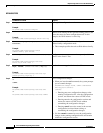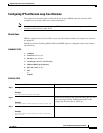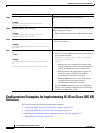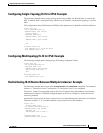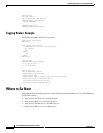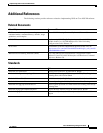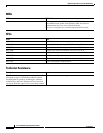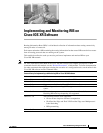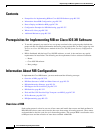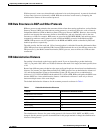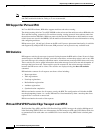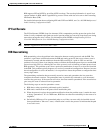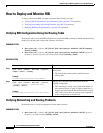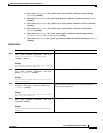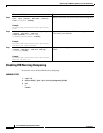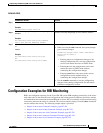
Implementing and Monitoring RIB on Cisco IOS XR Software
Contents
RC-320
Cisco IOS XR Routing Configuration Guide
OL-14356-01
Contents
• Prerequisites for Implementing RIB on Cisco IOS XR Software, page RC-320
• Information About RIB Configuration, page RC-320
• How to Deploy and Monitor RIB, page RC-324
• Configuration Examples for RIB Monitoring, page RC-327
• Where to Go Next, page RC-330
• Additional References, page RC-330
Prerequisites for Implementing RIB on Cisco IOS XR Software
• To use this command, you must be in a user group associated with a task group that includes the
proper task IDs. For detailed information about user groups and task IDs, see the Configuring AAA
Services on Cisco IOS XR Software module of the Cisco IOS XR System Security Configuration
Guide.
• RIB is distributed with the base Cisco IOS XR software; as such, it does not have any special
requirements for installation. The following are the requirements for base software installation:
–
Router
–
Cisco IOS XR software
–
Base package
Information About RIB Configuration
To implement the Cisco RIB feature, you must understand the following concepts:
• Overview of RIB, page RC-320
• RIB Data Structures in BGP and Other Protocols, page RC-321
• RIB Administrative Distance, page RC-321
• RIB Support for IPv4 and IPv6, page RC-322
• RIB Statistics, page RC-322
• IPv6 and IPv6 VPN Provider Edge Transport over MPLS, page RC-322
• IP Fast Reroute, page RC-323
• RIB Quarantining, page RC-323
Overview of RIB
Each routing protocol selects its own set of best routes and installs those routes and their attributes in
RIB. RIB stores these routes and selects the best ones from among all routing protocols. Those routes
are downloaded to the line cards for use in forwarding packets. The acronym RIB is used both to refer
to RIB processes and the collection of route data contained within RIB.



